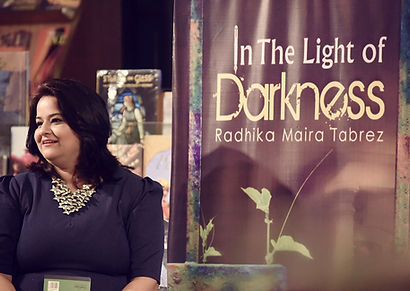What a sumptuous spread!
- radhika-maira-tabrez
- Sep 17, 2016
- 3 min read
The following piece was originally written and published in ThnkMkt Magazine.
If there really is a ‘melting pot’ of cultures, anywhere in the world, it is India. And by a logical extension, also a melting pot of cuisines. Indian cuisine is technically a misnomer. What we are actually is a potpourri of over two dozen regional cuisines that have collectively made a mark on the world gastronomical stage. True to our Indian hospitality, over the years we have also welcomed many outsiders, and absorbed them into our culinary portfolio, indistinguishably, as one of our own.
As I researched about what these additions were, I came across some usual suspects but also quite a few shockers. Almost all of us know that the potatoes were a gift to us by the Portuguese. As were the chilies and the tomatoes. Although, arguably the best food historian India has ever produced KT Achaya, doesn’t quite agree with that line of thought. According to him, potato had just made its way to Europe from its native lands of Latin America, about the same time when Vasco Da Gama, brought it to us. It was a new food to Europeans as well. Had it not been for Gama, potato would have found its way into the cargo ships of our own Indian traders on their way back from Europe and reached us anyway. But that argument aside, what came as utter surprise to me, was that one of the most famous Indian preparation that uses both, the potatoes and chilies in ample proportion, a quintessential snack that no party or celebration is complete without – the Samosa, isn’t from India. It had been around in the Middle East since the 10th century, known then as the sanbosag and had even found a mention in Tarikh-e-Beyhaghi, the chronicles of an Iranian historian Abolfazl Beyhaghi. It came to India during the 13th or the 14th century, eventually taking the current shape and form, over the many centuries; and never left.
That brings me to the shocker number two. Idli, too, isn’t a native of these lands; at least not the modern fermented and steamed version which we are familiar with. This assertion is still as controversial as it was when first made. But quite a few food historians stand by it. According to them the three key aspects of the present form of Idli – the use of rice grits along with with urad dal, the long fermentation and the steaming process –all concepts are foreign imports. Now, the real question is, from where. According to some, the science of fermenting and steaming the Idli was introduced to us by the chefs of visiting Hindu kings from Indonesia who often visited India on a bride-hunting trip. Then there are those who cite the references available in the Al-Azhar University Library in Cairo to claim, that a version of Idli was being consumed by Arabs in that region since long, and was brought to the Indian shores by Arab traders. So we may not quite be sure of whom to thank for this healthy food with an unquestionable mass appeal, until the jury is still out. But we sure are grateful.
Now Biryani, as most of us know was introduced to us by the Persians. Again there is a bit of confusion about how Indians were introduced to this scrumptious preparation. Quite a few credit its origins to the act of experimenting with Persian Pilaf in Northern India. Yet others say it originated in South India under the Arab influence. Then there are enough and more accounts of a ‘one-pot’ dish being prepared for large armies all over India, combining rice, any available meat and the spices; which could have just as easily been an ancestor of our present day Biryani. But what almost all food historians and critics are unanimous on, is that no other dish has been assimilated better into our culture and cuisine, than Biryani; finding a variant in almost all corners of the country.
Oh! How could I forget; turns out, that a dish which according to a lot of my foreigner friends is an indelible part of my ‘indianness’; was born on the lands far, far away. Allow me a moment to calm down, because this one hit very close to the heart. So, the very epitome of our lively Punjabi culture – the juicy, spicy, vibrantly colored and soulfully aromatic Chicken Tikka Masala was invented by a Scottish Bangladeshi chef in Glasgow. The Naan, a faithful companion of the Chiken Tikka Masala, is an Afghan import; but that is hardly any news.
But isn’t this just incredible? Cuisines are important markers of our cultural identity. And to learn that a food item that you have always considered an inseparable part of yours, is actually an import, just proves one thing. That the whole world is indeed, one big family. And India is, indubitably, their favorite buffet table.



















Comentários